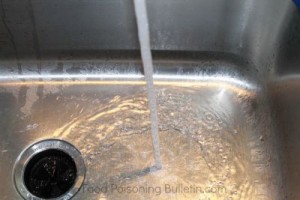Residents of Marion Twp., Pa. are drinking water from a tank that has been trucked into town after E.coli was discovered in a well earlier this week. Lab tests on the water, which came out of taps with a cloudy appearance, found E.coli and total coliform bacteria which are both signs of human or animal waste contamination, according to WFMZ-TV News. Officials have not determined the source of the contamination.
 Testing wells once a year is a good idea and one of the main goals of National Ground Water Awareness Week March 9-15, 2014. Thirty percent of all available freshwater comes from ground water, according to the Centers for Disease Control and Prevention (CDC). Occasionally, it becomes contaminated from incorrect use of fertilizers and pesticides, poorly located, or damaged septic systems or chemical spills.
Testing wells once a year is a good idea and one of the main goals of National Ground Water Awareness Week March 9-15, 2014. Thirty percent of all available freshwater comes from ground water, according to the Centers for Disease Control and Prevention (CDC). Occasionally, it becomes contaminated from incorrect use of fertilizers and pesticides, poorly located, or damaged septic systems or chemical spills.
These incidents affect millions of Americans. Roughly 90 million Americans get their water from community supplied systems that use ground water as their primary source. About 13 million Americans get their water from private wells.
Most drinking water outbreaks reported between 1971 and 2006 were linked to the use of untreated ground water (31 percent) or ground water treatment deficiencies (23 percent,) according to the CDC. Shigella, hepatitis A, norovirus, Giardia, Campylobacter, and Salmonella were the most common pathogens identified with water outbreaks during that time period. But E.coli is also a problem
Well owners have the responsibility of monitoring and maintaing their wells. A yearly check up is recommended. Ask your state or local health department for resources.




